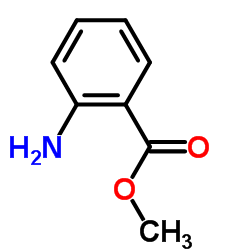Reducing honey bee defensive responses and social wasp colonization with methyl anthranilate.
Tanya Pankiw
文献索引:J. Med. Entomol. 46(4) , 782-8, (2009)
全文:HTML全文
摘要
Human victims of a massive number of stings have been steadily increasing since the invasion of Africanized honey bees (Apis mellifera) to the United States in 1990. Multiple honey bee stings may result in venom toxicity, leading to renal failure and even death. Here we tested the efficacy of methyl anthranilate as a honey bee repellent during a massive defensive response by Africanized honey bees. An aerosolized solution of 10% methyl anthranilate reduced the number of defensive bee hits to a retreating victim by 95% compared with a water control. One hundred fifty milliliters of the 10% methyl anthranilate solution sprayed onto stationary foam balls covered with black suede leather located 2 m from provoked Africanized colonies received 80% fewer stings than targets treated with water. Methyl anthranilate (100%) delivered through a UV blocking 3 mil polyethylene pouch was 100% effective in preventing Polistes colonization in wildlife observation huts and from the roof overhang of home patios. Although methyl anthranilate was not 100% effective in preventing honey bee stinging, it seemed to reduce number of stings below the average human LD50, indicative of a promising tool for preventing honey bee venom toxicity and wasp colonization.
相关化合物
| 结构式 | 名称/CAS号 | 分子式 | 全部文献 |
|---|---|---|---|
 |
邻氨基苯甲酸甲酯
CAS:134-20-3 |
C8H9NO2 |
|
Palatability of bird repellents to Rattus norvegicus.
2001-07-01 [Pest Manag. Sci. 57(7) , 615-9, (2001)] |
|
Synthesis and antibacterial activity of novel 4-chloro-2-mer...
2013-02-01 [J. Enzyme Inhib. Med. Chem. 28(1) , 41-51, (2013)] |
|
High-performance liquid chromatographic determination of met...
2001-05-11 [J. Chromatogr. A. 917(1-2) , 95-103, (2001)] |
|
Comparison of methyl anthranilate and denatonium benzoate as...
2000-09-15 [Physiol. Behav. 70(5) , 521-5, (2000)] |
|
Passive avoidance training results in increased responsivene...
1999-01-01 [Neuroscience 93(4) , 1507-14, (1999)] |